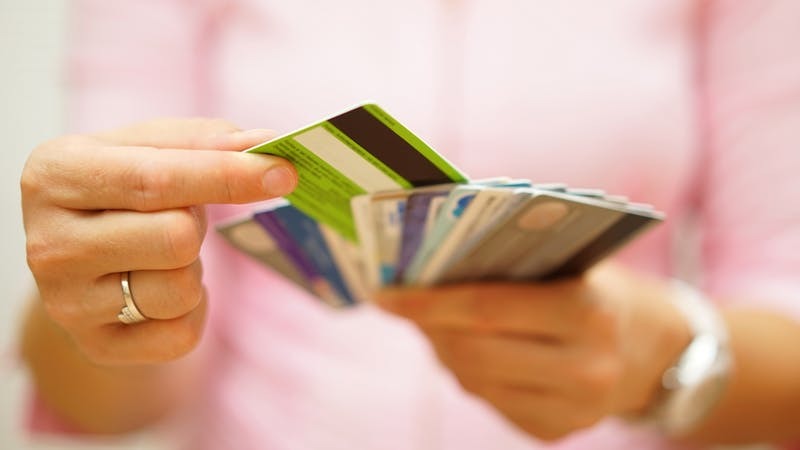
OVERDRAFT charges have caused many a headache for current account customers, whether it’s through busting your overdraft limit without realising it, or being hit with a big monthly bill.
It can be all to easy to regularly dip in and out of an overdraft without fully considering the overall cost – and whether borrowing could be cheaper elsewhere. But now, the UK’s biggest current account provider will shake up the way overdrafts are charged.
Millions of people moved to ‘pay-as-you-go’ overdraft system
Lloyds Banking Group, which has over 20 million personal current account customers, will change its overdraft charges from November.
It says more than nine in 10 of those with its brands Lloyds Bank, Bank of Scotland and Halifax, will be left either better off or in the same position financially. Lloyds will have a “pay-as-you-go” system to help people keep on top of their finances. Customers will be charged a single rate of 1p per day for every £7 of planned overdraft usage. The banking group is also removing some fees and charges – including for unplanned overdrafts. Lloyds says the moves will mean, overall, it makes less money from overdrafts.
What’s the background?
The Financial Conduct Authority (FCA) has already said it is putting high-cost credit, including overdrafts, under the spotlight. Consumer group Which? Previously found some unarranged overdrafts potentially cost more than a payday loan. The Competition and Markets Authority, has said that in 2014, £1.2 billion of banks’ revenues came from unarranged overdrafts.
What’s the reaction been to Lloyds’ announcement?
Martin Lewis, founder of moneysavingexpert.com, says: “Charges for breaching your overdraft limits have been a scourge for many years.” He adds: “People often pooh-pooh credit cards, but if you’re overdrawn, debit cards are debt cards too.”
Andrew Hagger, founder of moneycomms.co.uk, says: “I’m sure Lloyds won’t be the last bank to review its overdraft tariff in the next few months.”
What about major current account providers? Here’s what they say:
Barclays: “Barclays does not provide unarranged overdrafts or any other form of unarranged borrowing. We have introduced text alerts, grace periods and buffer zones to help customers manage their finances and avoid fees.”
RBS/Natwest: “We want to make banking simple, fair and transparent, so in May we wrote to nearly 12 million customers to let them know our maximum fees for unarranged overdraft usage are being cut by almost half, from £150 to £80.”
Santander: “We believe in a simple and transparent approach to overdraft charging. We already have a maximum total monthly overdraft fee cap that applies to all arranged and unarranged overdraft charges, including paid and unpaid transaction fees.”
HSBC: “We are removing interest charges on unarranged overdrafts on our most popular accounts, including HSBC Bank Account, HSBC Advance, as well as our Graduate Account and retaining the policy of not charging more for an unarranged overdraft than by the amount the customer is overdrawn, up to a maximum of £80 a month.”
Nationwide Building Society: Nationwide already has some charges caps in place and has further plans to cap charges from August.
If you’re always slipping into the red, how can you dig yourself out?
If you’re seriously struggling, consider getting free help from a debt charity, as well as talking to your lender to stop the problems getting worse.
Rachel Springall, a finance expert at Moneyfacts.co.uk, suggests those who dip in and out of their overdrafts should make the most of banks’ free text alerts when they’re about to go into the red, and if possible, top up their current account from any savings. Looking for banks offering overdraft buffers can be another way to avoid being hit by charges. Springall highlights a £250 overdraft buffer from First Direct.
Zero interest credit cards can also give some breathing space when tackling debt, but Springall cautions: “It’s vital that card customers make a plan to tackle the balance during the interest-free period and not have it hanging over their heads.”
Using pre-paid cards can be another way for borrowers to stick to their spending limits.
Meanwhile, Lewis says: “Anyone who has had bank charges, which have contributed to them being in financial hardship, may still be able to reclaim them and get hundreds back.”

Enjoy the convenience of having The Sunday Post delivered as a digital ePaper straight to your smartphone, tablet or computer.
Subscribe for only £5.49 a month and enjoy all the benefits of the printed paper as a digital replica.
Subscribe